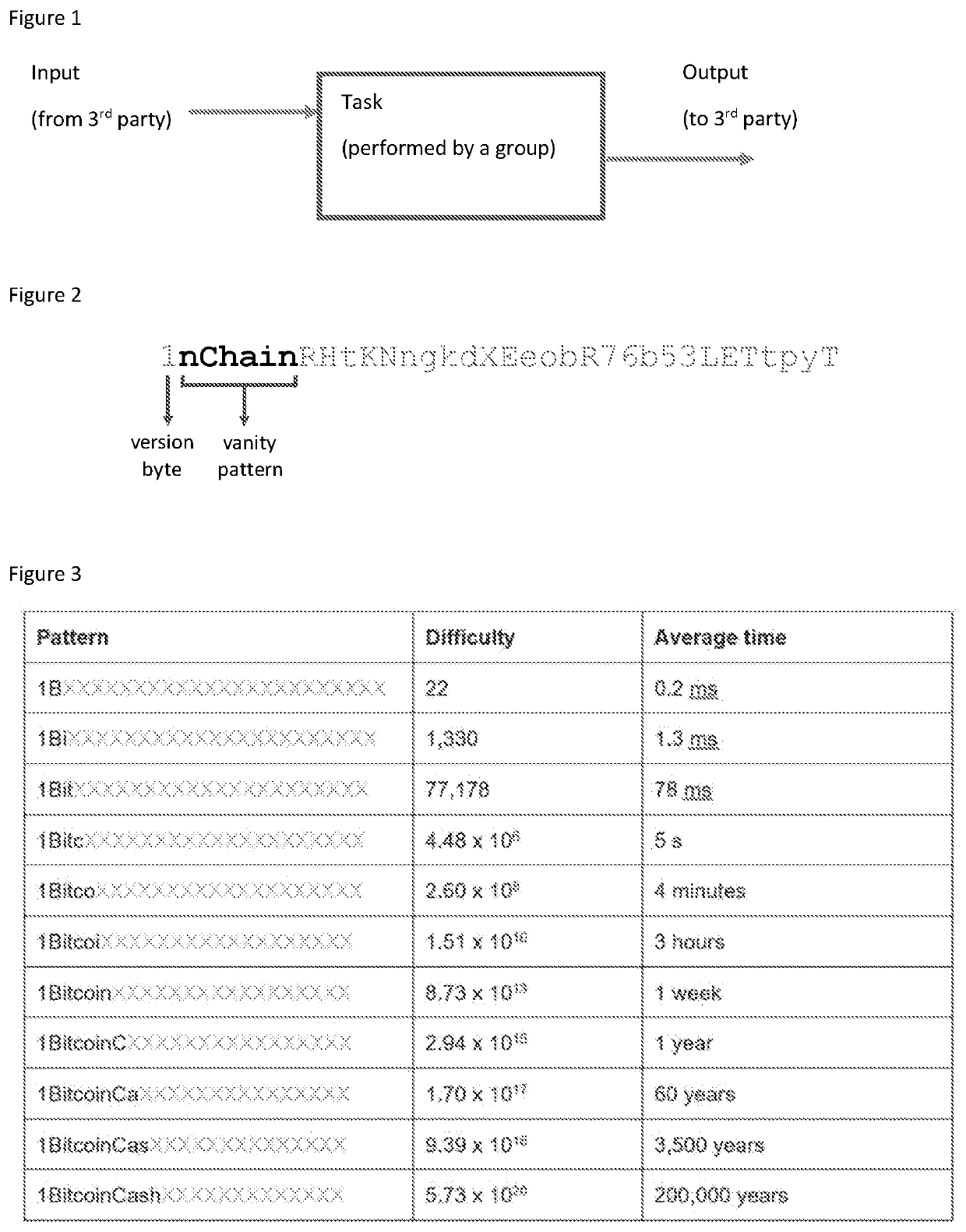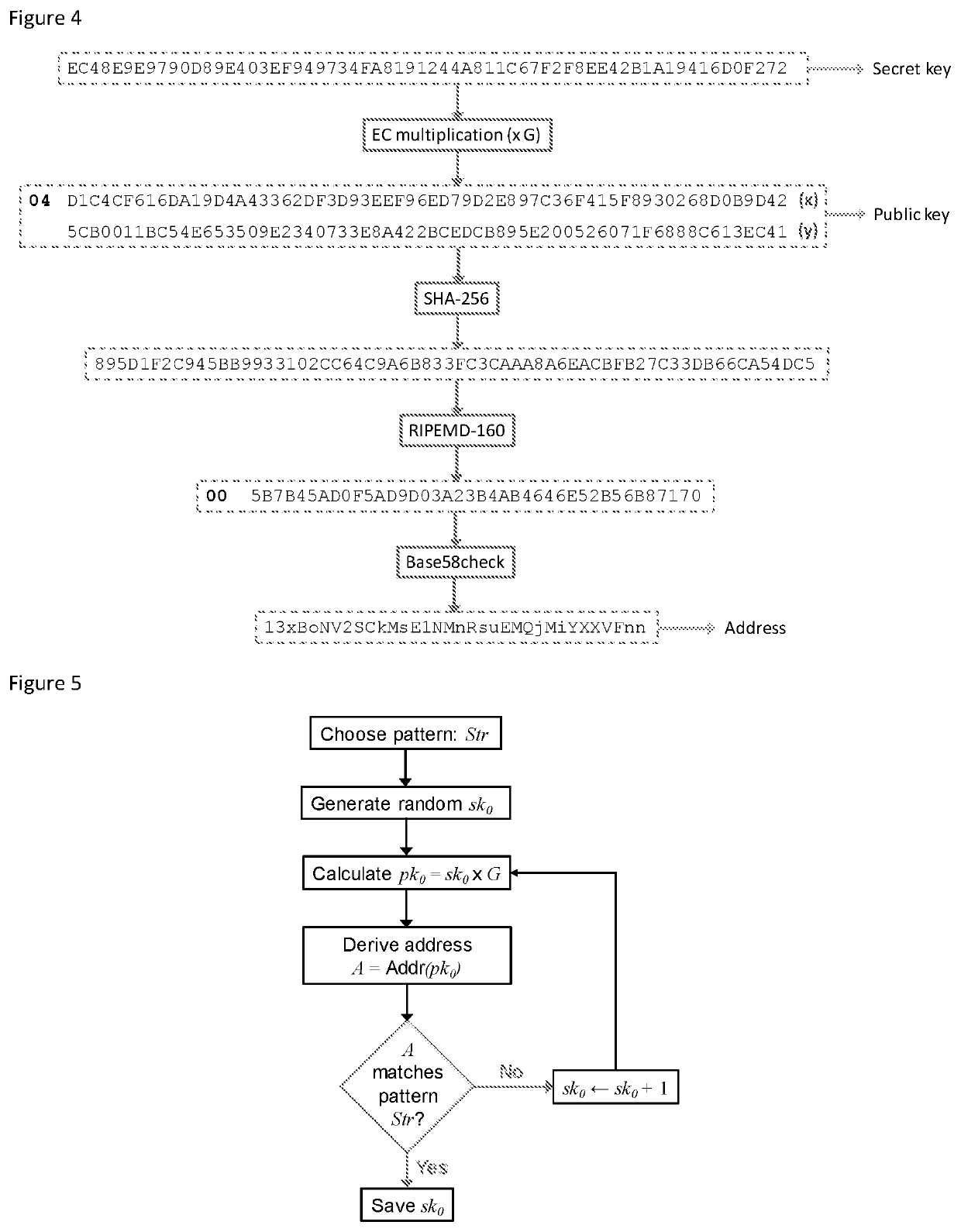Computer-implemented systems and methods for performing computational tasks across a group operating in a trust-less or dealer-free manner
a technology of computer-implemented systems and computational tasks, applied in the field of computer-implemented methods and systems, can solve the problems of individual miners working alone requiring specialist dedicated hardware and resources, mining pools are susceptible to cheating, and the support of the blockchain is computationally expensiv
- Summary
- Abstract
- Description
- Claims
- Application Information
AI Technical Summary
Benefits of technology
Problems solved by technology
Method used
Image
Examples
example computational
[0053 Task
[0054]By way of example, the method, and system for implementing the method, is described using the determination of a vanity address by a dealer-free threshold signature group. This task is represented in FIG. 1 and is explained independently from the secure assignment of the task, and delivery of result, from a third party (or any other process).
[0055]The method involves a group of participants who generate a shared public key via a secret sharing scheme without the use of a trusted third party dealer. The method utilises the arithmetic properties of secret sharing polynomials and the homomorphic properties of elliptic curve multiplication to enable parallel determination for vanity address strings.
[0056]The method enables the distribution of the computational task, such as determining a vanity address, without any loss of security. A dealer or similar trusted party is not needed. The method can additionally enable an assessment or measurement of the computational resour...
PUM
 Login to View More
Login to View More Abstract
Description
Claims
Application Information
 Login to View More
Login to View More - R&D
- Intellectual Property
- Life Sciences
- Materials
- Tech Scout
- Unparalleled Data Quality
- Higher Quality Content
- 60% Fewer Hallucinations
Browse by: Latest US Patents, China's latest patents, Technical Efficacy Thesaurus, Application Domain, Technology Topic, Popular Technical Reports.
© 2025 PatSnap. All rights reserved.Legal|Privacy policy|Modern Slavery Act Transparency Statement|Sitemap|About US| Contact US: help@patsnap.com



